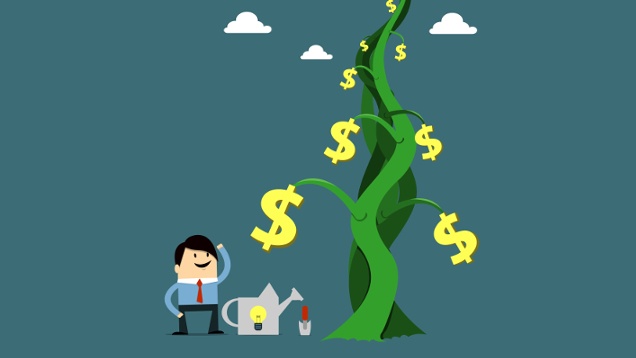There is only one reason to invest money: So you can someday spend it. If you don’t want to have to work anymore, or at least not to depend on a paycheck, you have several options.
- The first is to generate dividends by investing in stocks or private businesses such as a local bar held through an LLC.
- The second is to generate interest income by loaning money to banks (e.g., certificates of deposit), corporations or governments (e.g., investing in bondsand municipal bonds), or individuals (e.g., payday loans).
- The third is to generate rent by investing in real estate and letting other people use property that is yours, whether an apartment, office or storage unit.
There are a few other options, but those three asset classes cover the investing needs for a vast majority of the population.
Why does this matter? Because when you look at that, it becomes clear that your job as an investor is to buy or create sources of dividends, interest income, and rents.
This is so important, I am going to repeat it.

Your job as an investor is to buy or create sources of dividends, interest income, and rents.
That is the heart and soul of the matter. People talk all day long about the wealth of Warren Buffett or Bill Gates. That wealth is simply the underlying assets they own, which only has value because it can generate or be converted into cash that can, in turn, be used for goods and services. Both men own all three types of assets and collect billions of dollars each year.
Some small town millionaires prefer to build up a portfolio of mid-tier hotels or restaurant franchises. Others are more content owning the local bank and taking lucrative dividends on his family’s shares.
How to Apply This Philosophy to Your Investment Portfolio
When it comes to putting this into practice in everyday life, an example might help.
Imagine that you are considering buying $25,000 worth of shares of Johnson & Johnson. As of 2016, based on the current dividend yield you would be “buying” cash dividend income of $908 per year plus any growth. The company has raised its dividend every year for decades, so you could try and project out the future dividend income.
By taking this approach, you can compare different investments. This is closely related to the earnings yield value investing strategy and comparing earnings yields to Treasury bond yields, both of which are a little more advanced concepts that might be appropriate for beginners, who would do best to try and be average.
My very first investment of note produced around $16.44 in pre-tax cash profit per day. I was 18 years old. It wasn’t a lot of money, but it was a good start and one that required very little capital out of my pocket. Everything I own today came, in part, from that little cash engine that allowed me to buy other assets that churned out dividends, interest income, and rent.

Factor in Inflation and Taxes to Determine How Successful Your Investments Are
Once you have begun collecting dividends, interest, and rents, you need to adjust them once per annum for the rate of inflation and compare your “real”, after-tax income from year to year.
Over time, the graph should be pointing upward so that your standard of living is increasing as you age.
In other words, it doesn’t matter how many dollars or Euros, Yen or pound sterling you have in the bank. What matters is how many cheeseburgers you can buy; how many cars you can buy; how many tins of coffee you can buy; how many gallons of gasoline you can buy; how many hours of entertainment you can buy; how many shirts you can buy; how many books you can buy; how many music lessons you can buy; ad infinitum. It is purchasing power that counts.
How you get there, and what your ultimate investment portfolio turns out to be, will say a tremendous amount about you as a person.
There are many self-made millionaires who have never owned a single share of publicly traded stock in their lifetime and never plan on doing so, either. There are specialists who only study one small area and exploit their knowledge for maximum benefit, such as the man described by legendary value investor Benjamin Graham, who reportedly became such an expert in water companies that he knew the precise profit every time a tub full of bathwater was filled or a toilet was flushed. How you put this in practice is entirely up to you, your temperament, and your resources.
It’s not about property ownership it’s about control! Visit Property Millionaire Intensive to get more details.
Do you have the desire to become financially free through property investment? Visit Property Intensive Seminar for more details.
